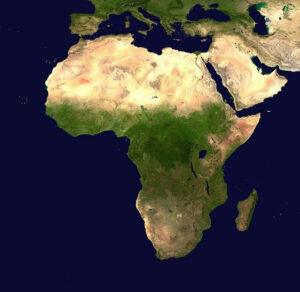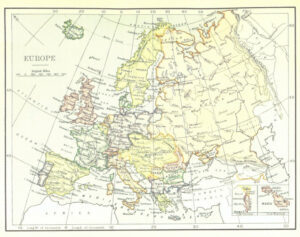Hello! Today we’re off to explore the continent of Asia. Here are some common greetings from various parts of Asia. Choose one and use it all day for practice. Teach the family your new greeting!
Greetings from various countries in Asia
- konnichiwa (pronounced “kone-nee-chee-wah”) (Japan)
- ni hao (pronounced “nee haow”) (China)
- Namaste (pronounced “nuh-muh-stay” rather than “nah-mah-stay”) (India)
- Neih hou (pronounced “nay-ho”) is used to say hello in Hong Kong
- Anyong haseyo (pronounced “ahn-yo ha-say-yoh”) (Korea)
- In Thailand, men say sawasdee khrap (pronounced “sah-wah-dee krap”)
- Women say sawasdee kha (pronounced “sah-wah-dee kah”)
- Good afternoon – Selamat tengah hari (pronounced “teen-gah har-ee”) (Malaysia)
Use this post as a menu and choose the activities best-suited to your child’s age and interests. You can do the activities over one day or many. So, without further ado, we’re off to visit Asia.
Asia
Facts about Asia:
- Population: more than 4 billion, yes that’s billion!
- Land Area: 45,036,490 square kilometres (17,388,690 square miles)
- Countries: 48
- Highest Peak: Mount Everest, on the border of Nepal and China, rises 8848 metres (29,029 feet) above sea level.
- Largest Lake: Caspian Sea
- Longest River: Yangtze or Chang Jiang. At 3,964 miles (6,380 kilometres) long it’s the third longest in the world.
For more interesting facts about Asia for kids including great photos, check out the oddizzi.com website.
Asian Geography Games
Sheppardsoftware.com has some great interactive Asian geography games. The children and I just tried out the country identification game for beginners. Even my husband was hooked. We’re going to try to match the capitals to the countries tomorrow.
Google Earth/Maps Asian Landmark Scavenger Hunt
Learning Objective: Children will be able to use Google Earth/Google Maps to find specific landmarks.
Go to Google Earth if your computer supports it or Google Maps if it does not. Try to locate these famous Asian Landmarks using the clues below. Find the attraction and check out the photos. Below this Scavenger Hunt, you’ll find the answers to these clues and some information about each place.
Clues for your map search:
- This city in Beijing, China, may be forbidden, but I bet you can find it.
- Find the place that houses an army of warriors made of terracotta.
- Locate the highest mountain in Japan. What is it called?
- In Siem Reap, Cambodia find the largest religious monument in the world. What is it called?
- Also known as the Luminous Tomb, you’ll find this famous landmark in India. What is it?
Answers:
1. “The Forbidden City was the palace of the Chinese emperors during the Ming and Qing dynasties. It is located in the heart of Beijing, the capital city of China, and is the largest ancient palace in the world.” For more information about this amazing place, visit the Ducksters educational Forbidden City website. You can even take a mini quiz on this website.
2. “Now called the Terracotta Army or Terracotta Warriors, the figures are located in three pits near the city of Xi’an in China’s Shaanxi province. After the warriors were discovered, the site became a museum and a UNESCO World Heritage Site in 1987.” Read about their fascinating story on LiveScience.
3. Mount Fuji is the highest mountain in Japan and it is an active volcano. Mount Fuji is 3,766.24 meters high (12,389.2 feet). For more facts on Mount Fuji, this kidsconnect.com post is a good one for children.
4. Angkor Wat is the largest religious monument in the world. In Khmer, Angkor Wat means “City Temple”. Built in the 12th century, Angkor Wat is dedicated to the Hindu god Vishnu. For more information on this incredible place, take a look at this post on Khan Academy.
5. Built by Shah Jahan (5th ruler of the Mughal Dynasty), the Taj Mahal was designed as a resting place for his beloved wife who died in childbirth. For more on the Taj Mahal, read this post.
Japan
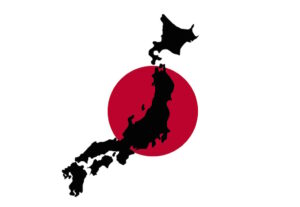
Here are a few facts about Japan. To read more, see the Science Kids post on Japanese Facts for Kids.
- The Japanese name for Japan is “Nihon” or “Nippon” which means “sun origin”.
- Japan belongs to the continent of Asia. Japan is an island nation surrounded by the Sea of Japan to the East and the Pacific Ocean to the West.
- Japan is made up of 6,852 islands.
- The highest point in Japan in Mount Fuji, which stands at 3,776m (12,388ft).
Cherry Blossoms
One of the most popular times of year to visit Japan is in the spring when the world-famous cherry trees are in full-bloom. Hanami is one of Japan’s oldest festivals. Hanami means ‘flower viewing’, but it has come to be synonymous with having a picnic feast near cherry blossoms.
For inspiration, watch this video of the top 10 Cherry Blossom Viewing spots in Japan.
Alpha Mom shares instructions for one of my favorite art projects for children – painted cherry blossoms. Make your own beautiful cherry blossom picture with a recycled soda or water bottle and some paint. Click on the photo or this link for a full list of instructions. I like to use a larger piece of paper and leave space for a haiku.
Haiku
What is haiku? “Haiku” is a traditional form of Japanese poetry. A haiku poem has 3 lines. The first and last lines of a Haiku have 5 syllables and the middle line has 7 syllables. The lines rarely rhyme.
KidZone has a great haiku to help you remember the structure:
I am first with five
Then seven in the middle —
Five again to end.
Kidzone also shares a cute haiku activity to do with a group of children. Children create haiku riddles about animals without revealing the animal name. Friends then try to guess the featured animal. Check out this website for examples.
Now, it’s your turn to write a haiku. You can write one about cherry blossoms and add it to your cherry blossom painting. Or, you can try creating an animal riddle haiku and ask a family member to solve it. Haiku poems often describe nature.
ReadWriteThink has a really fun haiku generator here. My sons loved choosing the background and font for their haiku poems.
Here’s an example of a spring haiku I wrote using the readwritethink interactive generator:
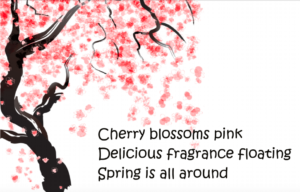
Have fun writing your haiku!
Origami
My sons love origami. They eagerly seek out tutorials and practice daily. This art class curator website has a fantastic post on the origins of origami with links to a Ted Talk by Robert Lang on the Math and Magic of Origami and to a Netflix documentary featuring the artwork of origami masters. It also shares the beautiful legend of the thousand paper cranes and demonstrates the STEM applications of origami. Check it out here.
Origami originated in 17th century Japan. Classic origami only uses one piece of paper with no cuts.
This origami website has links to tons of origami creations organized by category. If the creation has one star it’s easy and 3-4 stars, it’s very difficult. This is the best origami website I’ve seen for children.
Here’s an easy origami tutorial for younger children from kids press magazine. Even my 6-year-old could do this one. Kids Press Magazine also shares other easy origami animal projects here.
India
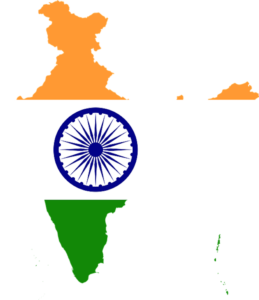
India Facts for Kids. For more facts on India, see this ‘school run’ post.
- About 1.2 billion people live in India.
- The capital of India is New Delhi, but the largest city is Mumbai.
- Hindi is the main language in India, and most people speak English as well.
- The currency in India is the rupee.
- The main religion in India is Hinduism. The next most popular religion is Islam; Sikhs and Christians also live in the country.
- One of the most important Hindu festivals is Diwali, also called the ‘festival of lights’.
Taj Mahal
The Taj Mahal was built by Shah Jahan, the fifth ruler of the Muhgal dynasty, as a burial place for his favorite wife, Mumtaz Mahal, who died while giving birth to their fourteenth child. Khan Academy has a great post about this iconic landmark.
Click on this link for the Free School video on the Taj Mahal for kids.
Younger kids may prefer this video with the Nat Geo Kids.
Here’s a simplified drawing tutorial to help your kids draw this famous landmark.
Bollywood
Bollywood is a play on words, taken from Hollywood (the hub of the U.S. film industry). The ‘B’ came from Bombay (now known as Mumbai), the center of the Indian film world. When people picture a Bollywood film, they often imagine elaborate productions with beautiful costumes full of choreographed song and dance numbers. If you’d like to read a brief history of Bollywood, see this post.
Bollywood Dance Performance
Speaking of elaborate dance choreographies, watch this amazing performance for some inspiration.
Learn your own Bollywood Dance Moves Here
Watch this video to learn some Bollywood dance moves. Manpreet breaks down the moves so they are easy to learn. Have fun!
China
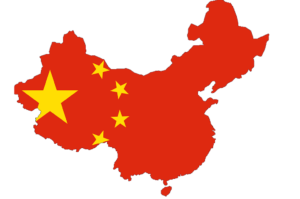
China Facts:
- China is officially known as the People’s Republic of China.
- China has the largest population in the world, with over 1.3 billion people (1,343,239,923) as of July 2012.
- China is the 3rd largest country by area at 9,706,961 sq km (3,747,879 sq miles).
- China belongs to the continent of Asia. Bordering countries include Afghanistan, Bhutan, Burma, India, Kazakhstan, North Korea, Kyrgyzstan, Laos, Mongolia, Nepal, Pakistan, Russia, Tajikistan, and Vietnam.
- The summit of Mt Everest marks the border between China and Nepal.
For more facts on China for kids, read this Science Kids post.
Terraces for Farming
By digging terraces on steep hills, Chinese farmers were able to farm more land. Terraces are highly effective for growing plants that need a lot of water.
To illustrate this point, third grade teacher, Kelly, does the following experiment with her class. Have your children our water over a ball of play dough. Observe what happens. Next, make terraces with the play dough. Now, pour the water again. What happens this time?
To see more of Kelly’s great ideas for studying ancient China, check out her fantastic blog.
Chinese Lanterns
“The first Chinese lanterns were invented in the Eastern Han Dynasty (25–220 AD) and used as lamps and for the worship of the Buddha.” Originally, they were used as a light source and protected the flame from the wind. Now, they’re used as decorations. Lanterns hung during Chinese New Year are meant to scare away the Nian monster and bring good luck.
You may wish to make these beautiful Chinese lanterns from The Kitchen Table Classroom.
Southeast Asia
Southeast Asia Facts
Southeast Asia is composed of eleven countries: Brunei, Burma (Myanmar), Cambodia, Timor-Leste, Indonesia, Laos, Malaysia, the Philippines, Singapore, Thailand and Vietnam.
“Southeast Asia is rich in wildlife with animals such as orangutans, leopards, elephants, water buffalo and rhinos. There is also significant diversity in culture, language, and religion. Much of Southeast Asia is rainforest and the climate is very wet. The wet weather makes the area prime for rice patty agriculture making rice the main staple in the Southeast Asian diet.” For more fun facts about Southeast Asia, check out the Ducksters website here.
Cambodia
Siem Reap, Cambodia, is home to the largest religious monument in the world – Angkor Wat.
Here’s a great video about Angkor Wat with spectacular footage and fascinating questions about the engineering of this amazing place. This video is better-suited for older children.
For younger children, here’s a video with fun Angkor Wat facts. You’ll have to read them though.
There are so many more fascinating places to explore in the continent of Asia. I hope you’ll have the chance to visit in person one day.
Tomorrow, we’re off to Africa!
Click on the posts below to see our virtual visits to Europe and South America:
Virtual Trip Around the World for Homeschoolers – South America












